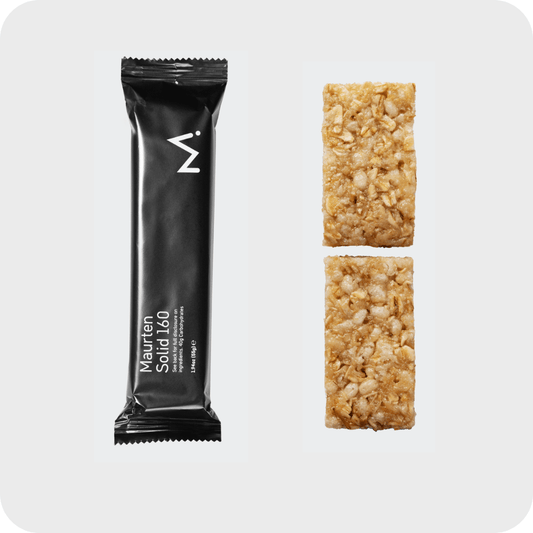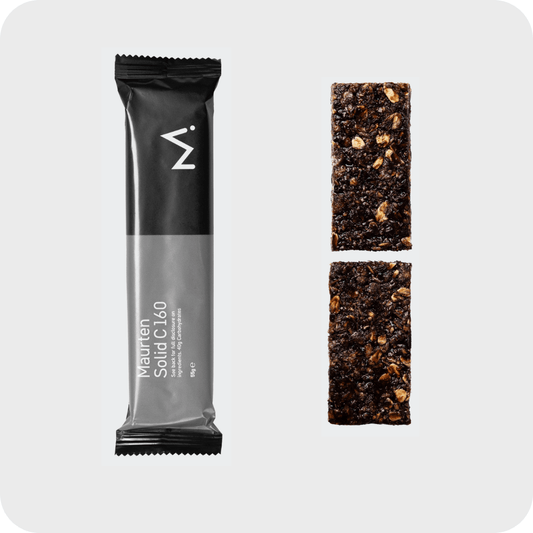
The basics of Fueling
Let's start out by saying that we are adamant that a healthy and varied diet should be the foundation of your nutrition. You want a clear nutrition plan that includes carbohydrates, fats, vitamins and everything else you need, through a delicious variety of regular foods.
Exercise and competition
During high intensity exercise and racing, a more efficient way to get your fill of carbohydrates is needed. There are two reasons: 1) You want to load as many calories as it is possible to utilize in order to keep maintain a higher pace. 2) To avoid stomach issues as your body's ability to digest decrease.
Your body will adapt
The human body adapts extremely well. Keep fueling with easy-to-utilize carbohydrates and you will increase your energy uptake. That will set you up for an extremely potent advantage as you will be able refuel faster.
120-180 grams per hour!
We have meticilously tested a variety of products on the market. Maurten is in our opinion the most efficient, which is why we wanted them as our partners. Through a Marathon, a high aim for fueling is often around 60 grams per hour. With Maurten, Kristian and Gustav are able to consume 120g per hour, they have even experimented with as much as 180g. A key factor to their success in long distance triathlon.

How Maurten works
All Maurten products are marked by a number that gives you the amount of calories in each pack. In a Drink Mix 320, you will find exactly 320 calories or 80g of carbohydrates, and in a Gel 100, there is a 100 calories or 25 g of carbs.
Why use gels or drink mixes?
Gels are developed to optimize your intake and absorption of carbohydrates during higher intensity activity. They are designed to pass quickly through the stomach, to the intestines, reducing the risk of gastrointestinal distress. During low intensity exercise you do not need to use gels. Food works. As intensity builds, blood is diverted away from the stomach and digesting food becomes more challenging. This is when you can transition to gels.
Daily requirements (3-12 g/kg)
1 - 4 hours prior (1-4 g/kg)
During race or training (30 - 90 g/hour )
Post race/training (1g/kg every hour for 4 hours)


Please reach out if you have any questions about fueling. We are always happy and ready to help out. Simply reply to this email, or reach out through our online form.
Very best,



















